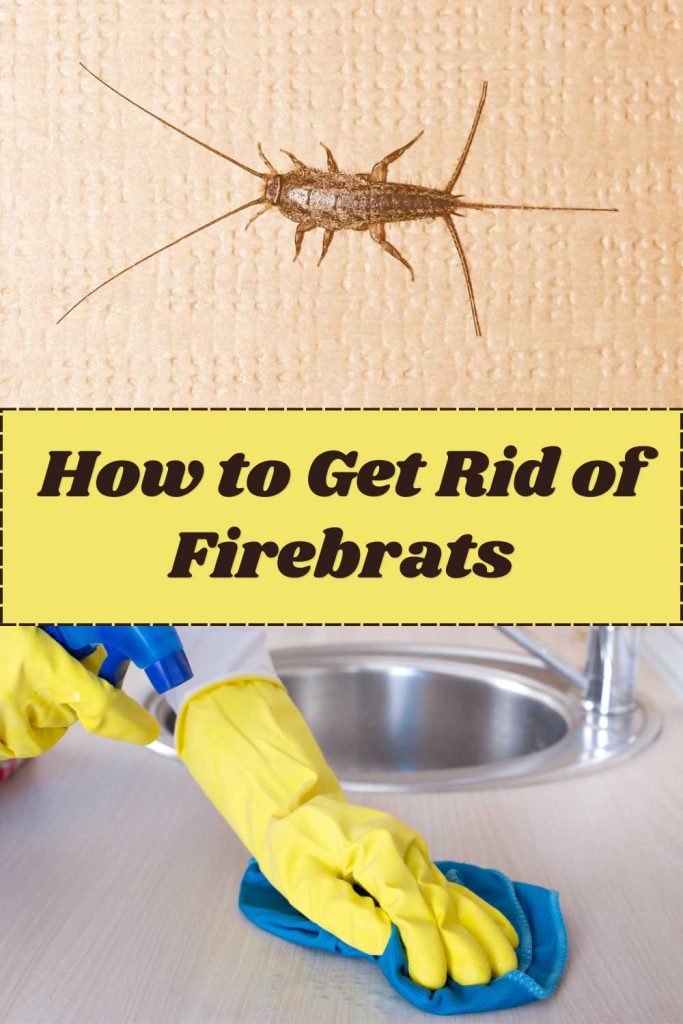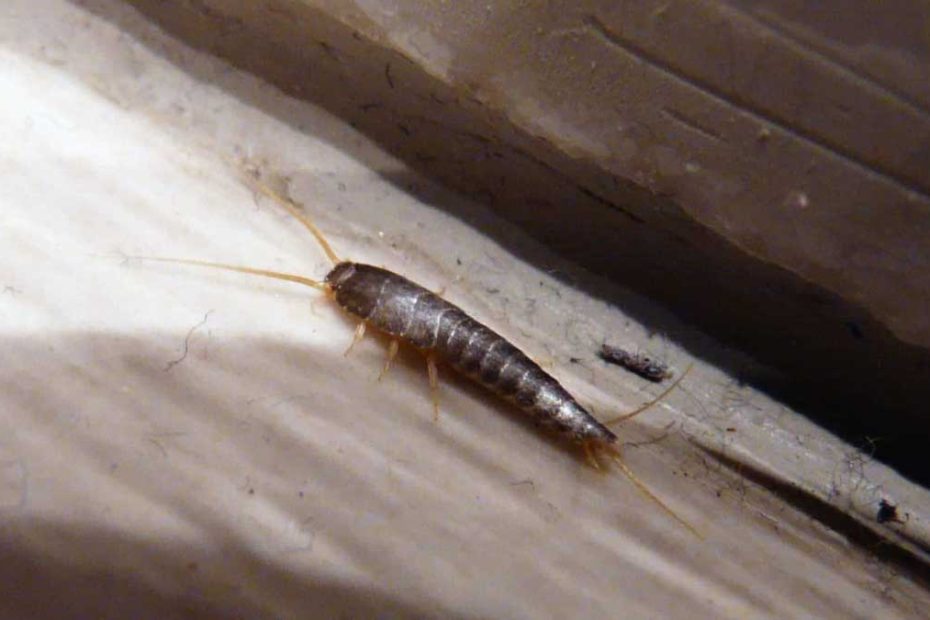Discovering firebrats in your home can be unsettling. These small, wingless insects thrive in warm, humid environments and can quickly become a nuisance. While they’re harmless to humans, their presence often indicates underlying issues like excess moisture or poor ventilation.
Getting rid of firebrats requires a strategic approach. You’ll need to address both the immediate infestation and the conditions that attract them. By understanding their habits and preferences, you can effectively eliminate these pests and prevent future invasions. Ready to reclaim your space? Let’s jump into the most effective methods to get rid of firebrats for good.
Key Takeaways
- Identify Firebrats: Recognize firebrats by their distinctive grayish or brown color, elongated bodies, and preference for warm, humid environments like kitchens, bathrooms, attics, and basements.
- Reduce Humidity: Lower indoor moisture levels using dehumidifiers and proper ventilation to make your home less attractive to firebrats.
- Seal Entry Points: Prevent firebrats from entering by sealing cracks and gaps in walls, floors, and around windows with caulk or weather stripping.
- Natural Remedies: Use essential oils like lavender, citrus, and cedarwood, or diatomaceous earth to repel and kill firebrats without harsh chemicals.
- Chemical Treatments: For severe infestations, consider insecticides such as pyrethrin-based sprays, boric acid, or desiccants, following the product instructions for safe application.
- Professional Pest Control: Engage professional pest control services for comprehensive treatment, advanced solutions, and ongoing prevention to effectively eliminate firebrats.

Understanding Firebrats
Firebrats, scientifically known as Thermobia domestica, are common household pests that thrive in warm, humid environments.
Key Characteristics
Appearance:
- Size: About 1/2 inch (12-13 mm) long
- Color: Grayish or brown with dark scales, often featuring a speckled pattern
- Body Shape: Flat, oval, with three tail-like appendages protruding from the rear
Habitat:
- Preferred Locations: Kitchens, bathrooms, basements, attics
- Temperature Preference: Optimal at 90°F to 110°F
- Humidity Levels: Thrive in areas with 75%-95% humidity
Diet:
- Primary Diet: Carbohydrates, such as paper, book bindings, and wallpaper paste
- Other Sources: Cotton, linen, silk, and even dead insects
Identification
Firebrats can often be mistaken for silverfish due to their similar appearance. But, firebrats prefer much warmer environments compared to silverfish. If you spot insects running rapidly across floors or walls in these areas, they are likely firebrats.
Understanding Their Behavior
Firebrats are nocturnal and avoid light. They hide during the day and come out at night to search for food. Their rapid reproduction cycle means that small infestations can quickly turn into larger ones if not addressed.
Common Signs of Infestation
- Sightings: Often the most obvious sign, especially at night
- Damage: Small holes or irregular feeding marks on paper, fabrics, or cereals
- Shed Skins: Firebrats molt throughout their lives, leaving behind translucent exoskeletons
- Reduce Humidity: Use dehumidifiers and improve ventilation to lower indoor moisture levels
- Seal Cracks and Gaps: Prevent entry by sealing crevices in walls, floors, and around pipes
- Proper Storage: Store food, paper products, and fabrics in airtight containers
Understanding firebrats’ behavior and the conditions they favor is crucial for effective control and prevention.
Signs of Firebrat Infestation
Recognizing a firebrat infestation early helps prevent damage and makes eradication easier. Here are key indicators of their presence:
Physical Appearance
Firebrats have distinctive features making them identifiable.
- Color: Grayish or brown with dark scales.
- Size: About 1/2 inch long.
- Body Shape: Elongated with long antennae and three tail-like appendages.
Seeing insects matching this description often points to an infestation.
Common Habitats
Firebrats prefer warm, humid environments.
- Kitchens: Near stoves, ovens, and water heaters.
- Bathrooms: Around bathtubs, sinks, and hot water pipes.
- Attics and Basements: Near insulation, heaters, and furnaces.
Should you notice these insects in these areas, it’s likely there’s an infestation.
- Sightings: Frequent spotting of firebrats, especially at night.
- Damage to Paper and Fabrics: Irregular holes in books, wallpaper, and clothes.
- Shed Skins: Finding cast-off skins near infested areas.
Regularly checking these signs helps in early identification and prompt action against firebrats.
Prevention Measures
Effective prevention measures keep firebrats from infesting your home. Implementing these strategies reduces the likelihood of encountering firebrats and promotes a healthier living environment.
Home Maintenance Tips
Regular home maintenance plays a key role in preventing firebrat infestations. Consistent upkeep ensures conditions are unfavorable for these pests.
Crack Sealing:
- Inspect your home for cracks and gaps in walls, floors, and around windows.
- Seal any openings using caulk or weather stripping to prevent entry points.
Proper Ventilation:
- Ensure areas like kitchens, bathrooms, attics, and basements have proper ventilation.
- Use exhaust fans to reduce humidity levels, particularly in bathrooms and kitchens.
Cleaning Routines:
- Maintain a regular cleaning schedule, focusing on areas prone to moisture.
- Remove clutter that can harbor firebrats, such as stacks of paper and cardboard.
Reducing Moisture Levels
Lowering humidity levels in your home creates an inhospitable environment for firebrats. Controlling moisture is essential for long-term prevention.
Dehumidifiers:
- Use dehumidifiers in damp areas like basements and laundry rooms to decrease humidity.
- Regularly empty and clean dehumidifier units to ensure optimal performance.
Leaks Repair:
- Check for and repair any plumbing leaks under sinks, around bathtubs, and in the basement.
- Closely monitor and fix roof leaks that could lead to increased moisture.
- Store food in airtight containers to avoid attracting firebrats.
- Keep clothes and books in dry, sealed containers to protect them from damage.
Continuing these prevention measures significantly lowers the risk of firebrat infestations and helps maintain a more comfortable home environment.
Natural Remedies
Natural remedies offer effective ways to address firebrat infestations without harsh chemicals. These methods are safe for families and pets and align with eco-friendly practices.
Essential Oils
Essential oils act as natural repellents against firebrats. Their strong scents disrupt the pests’ sensory experience, driving them away.
Common essential oils include:
- Lavender oil: Known for its calming properties, effective in repelling firebrats.
- Citrus oil: Deters pests with its sharp scent.
- Cedarwood oil: Commonly used in pest control, unpleasant to firebrats.
Application steps:
- Mix: Combine 10-15 drops of essential oil with water in a spray bottle.
- Shake: Ensure thorough mixing.
- Spray: Apply to baseboards, corners, and damp areas where firebrats appear.
- Repeat: Reapply weekly or as required.
Diatomaceous Earth
Diatomaceous earth (DE) provides an excellent natural solution for eradicating firebrats. This powder, made from fossilized algae, dehydrates and kills pests on contact.
Types of Diatomaceous Earth:
- Food-grade DE: Safe for use around pets and children.
- Non-food grade DE: Strictly for industrial use, not recommended for home application.
- Identify: Locate areas with firebrat activity.
- Apply: Lightly dust DE in areas such as cracks, baseboards, and behind appliances.
- Leave: Allow the DE to remain undisturbed for several days.
- Reapply: Repeat application after cleaning affected areas.
Using these natural remedies helps control firebrats without compromising safety or environmental health. Stay vigilant by consistently applying these methods and monitoring for signs of infestation.
Chemical Solutions
While natural remedies can be effective, chemical solutions often provide quicker results when dealing with firebrat infestations. Chemical treatments might be necessary for severe infestations or when natural methods fail to provide adequate control.
Insecticides
Insecticides are chemical substances specifically designed to kill or repel insects. For firebrats, several types of insecticides can be used:
- Pyrethrin-based Insecticides: Derived from chrysanthemum flowers, pyrethrins attack the nervous system of firebrats and other insects. You can find them in various forms, such as sprays, aerosols, and dust.
- Synthetic Pyrethroids: Chemicals like permethrin and cypermethrin mimic natural pyrethrins but offer longer-lasting protection. These are effective in areas with heavy infestation.
- Boric Acid: A natural mineral that acts as a stomach poison to firebrats. When firebrats ingest boric acid, it disrupts their digestive system, eventually leading to their death.
- Desiccants: Insecticides like silica gel and diatomaceous earth work by dehydrating firebrats. These are especially useful in dry and hard-to-reach areas.
Application Steps:
- Identify Infestation Areas: Locate warm, humid areas where firebrats are most likely to dwell.
- Choose Appropriate Insecticide: Select the insecticide based on the severity and location of the infestation.
- Apply Insecticide: Follow the product instructions to apply insecticide. Focus on cracks, crevices, and other hiding spots.
- Monitor and Reapply: Check the treated areas regularly. Reapply insecticide if signs of infestation persist.
Professional Pest Control
Professional pest control services offer comprehensive and highly effective solutions for firebrat infestations. Experts employ advanced techniques, ensuring both immediate and long-term eradication.
Advantages of Professional Pest Control:
- Expert Assessment: Professionals can accurately identify the infestation extent and the specific hiding spots of firebrats.
- Advanced Treatments: They have access to high-quality, industrial-grade insecticides unavailable to the general public.
- Safety Measures: Pest control experts follow stringent safety standards, ensuring that chemical treatments do not harm your family or pets.
- Long-term Solutions: They may offer ongoing monitoring and preventive treatments to keep firebrats at bay.
- Research Local Services: Look for reputable pest control companies in your area.
- Request an Inspection: Schedule an inspection to assess the severity of the infestation.
- Review Treatment Plans: Discuss different treatment options and choose one that suits your needs.
- Follow Up: Ensure regular follow-up visits to monitor and prevent future infestations.
Utilizing chemical solutions effectively eliminates firebrats and helps maintain a pest-free environment. By combining the use of insecticides and professional pest control services, you can tackle firebrat infestations with confidence and ensure lasting results.
Conclusion
Addressing a firebrat infestation requires a multi-faceted approach. By reducing humidity and sealing cracks, you can create an environment that’s less appealing to these pests. Regular maintenance and proper storage of food and materials are crucial steps in prevention.
Natural remedies like essential oils and diatomaceous earth offer safe, effective solutions. For more severe infestations, chemical treatments and professional pest control services ensure thorough eradication.
By combining these strategies, you can successfully eliminate firebrats and maintain a comfortable, pest-free home.
Frequently Asked Questions
What are firebrats?
Firebrats are small, grayish or brown insects with dark scales, scientifically known as Thermobia domestica. They thrive in warm, humid environments with temperatures between 90°F to 110°F and humidity levels of 75%-95%.
Where do firebrats usually live in homes?
Firebrats typically inhabit warm, humid areas like kitchens, bathrooms, attics, and basements. These areas provide the ideal conditions for their survival and reproduction.
Are firebrats harmful to humans?
No, firebrats are harmless to humans. However, their presence can be bothersome, and they can cause damage to paper, fabrics, and stored foods.
How can I identify a firebrat infestation?
Common signs include frequent sightings, damage to paper and fabrics, and shed skins. Firebrats have elongated bodies, long antennae, and three tail-like appendages.
How can I prevent firebrat infestations?
Prevent firebrat infestations by reducing humidity, sealing cracks and gaps, ensuring proper ventilation, using dehumidifiers, repairing leaks, and storing food and materials in airtight containers.
What natural remedies can be used against firebrats?
Essential oils like lavender, citrus, and cedarwood can repel firebrats. Mix with water and spray in affected areas. Diatomaceous earth (DE) is also an effective natural solution for eradicating firebrats.
What chemical solutions are available for firebrat infestations?
Chemical solutions include pyrethrin-based insecticides, synthetic pyrethroids, boric acid, and desiccants. These can provide quicker results for severe infestations compared to natural remedies.
When should I consider professional pest control services?
Consider professional pest control services for severe infestations or when do-it-yourself methods fail. Professionals offer expert assessments, advanced treatments, and long-term solutions.
What are the key indicators of a firebrat presence?
Key indicators include their distinctive elongated body shape, long antennae, three tail-like appendages, irregular holes in books and clothes, and cast-off skins.
How important is home maintenance in preventing firebrats?
Regular home maintenance, such as sealing cracks and ensuring proper ventilation, is crucial. It creates an inhospitable environment for firebrats, significantly lowering the risk of infestation.
